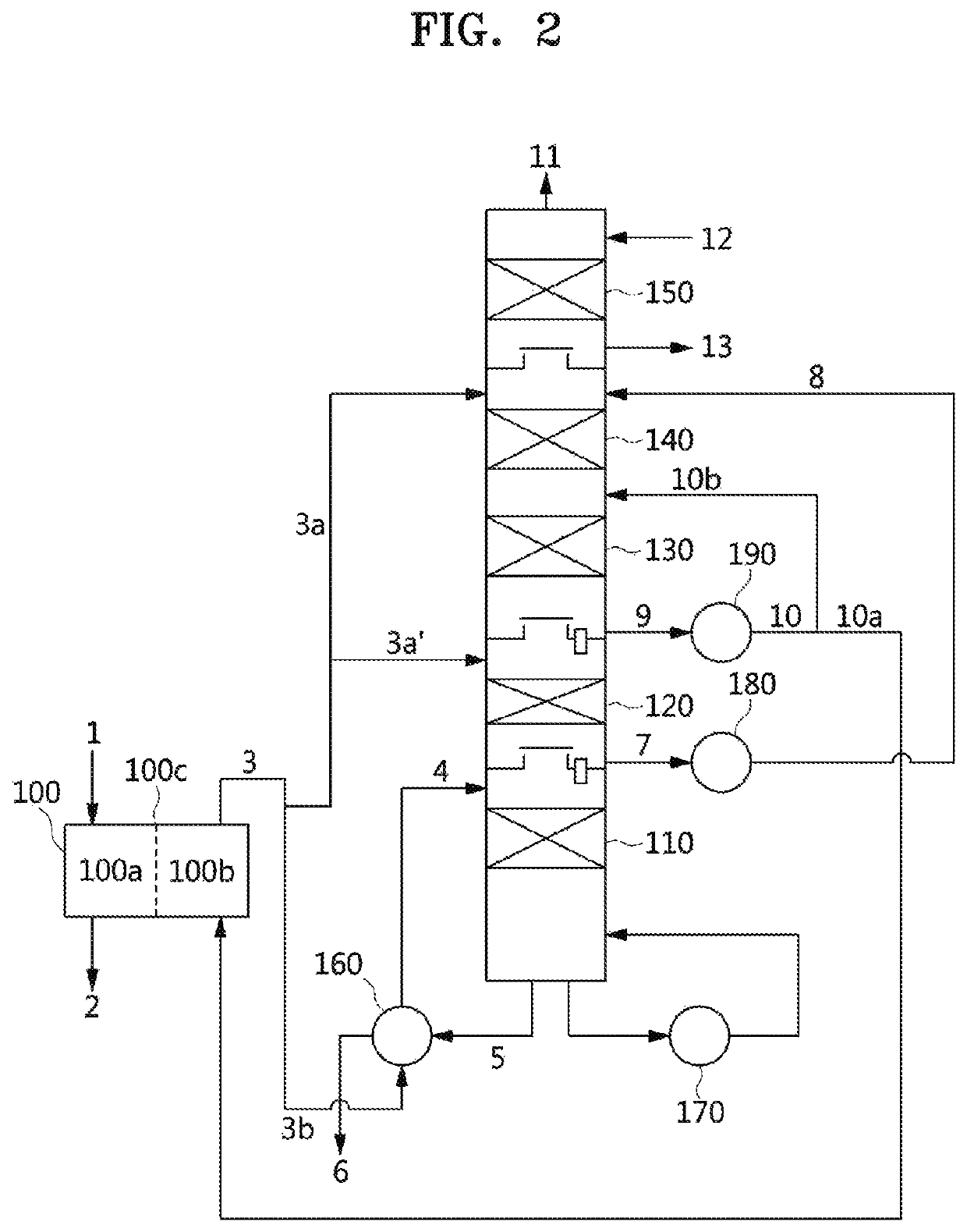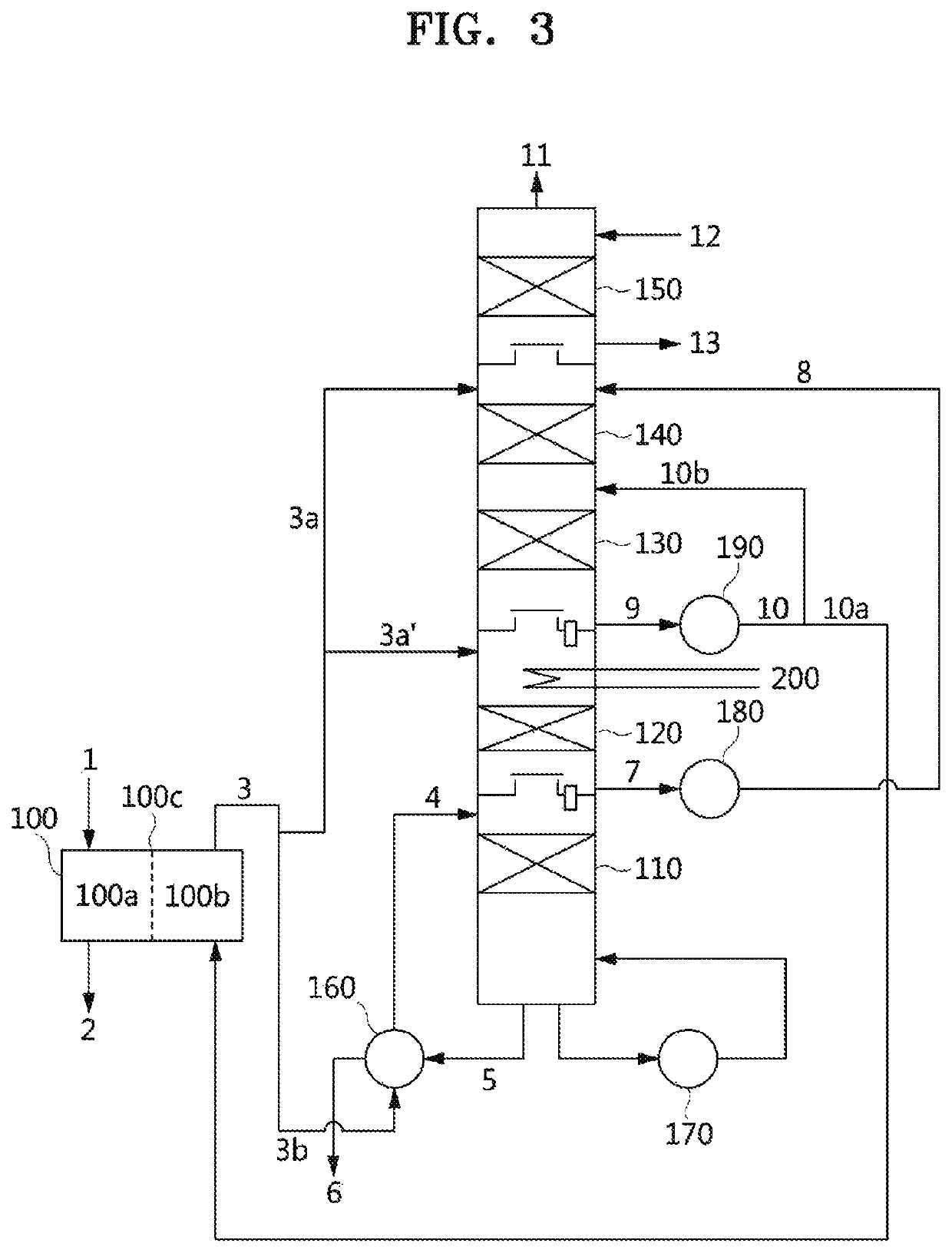Recovery method for ammonium bicarbonate solution
a technology of ammonium bicarbonate and recovery method, which is applied in the direction of vacuum distillation separation, sustainable manufacturing/processing, separation process, etc., can solve the problems of clogging of pipes, high energy consumption, and low energy consumption, so as to prevent the separation of ammonium bicarbonate and reduce the amount of carbon dioxide discharge
- Summary
- Abstract
- Description
- Claims
- Application Information
AI Technical Summary
Benefits of technology
Problems solved by technology
Method used
Image
Examples
example 1
[0048]According to the aspect illustrated in FIG. 2, to produce 100 ton / hr of water through a flow 6, an ammonium bicarbonate solution 10a supplied to the forward osmosis unit 100 includes 10 wt % of ammonium bicarbonate and has a flow rate of 100 ton / hr. The amount of water moving by osmotic pressure from the treated water zone 100a to the osmotic solution zone 100b of the forward osmosis unit 100 via the osmosis membrane 100c is 100 ton / hr, and a total amount of the diluted ammonium bicarbonate solution discharged via a flow 3 in the osmotic solution zone 100b is 200 ton / hr. Atop end portion of a regeneration apparatus including the distillation unit 110, the ammonia condenser 120, and the absorber 140 operates at 1 kgf / cm2 (absolute pressure), i.e., atmospheric pressure, and a pressure of water discharged to a lower portion of the distillation unit 110 via a flow 5 is 1.042 kgf / cm2 (absolute pressure) due to a pressure loss in a tower, and the temperature thereof at this pressure...
example 2
[0055]According to the aspect illustrated in FIG. 4, to produce 100 ton / hr of water via a flow 6, the ammonium bicarbonate solution 10a supplied to the forward osmosis unit 100 includes 10 wt % of ammonium bicarbonate and has a flow rate of 100 ton / hr. The amount of water moving by osmotic pressure from the treated water zone 100a to the osmotic solution zone 100b of the forward osmosis unit 100 via the osmosis membrane 100c is 100 ton / hr, and a total amount of the diluted ammonium bicarbonate solution discharged from the osmotic solution zone 100b via the flow 3 is 200 ton / hr. A top end portion of a regeneration apparatus including the distillation unit 110, the ammonia condenser 120, and the absorber 140 operates at 0.4 kgf / cm2 (absolute pressure), a pressure of water discharged to a lower portion of the distillation unit 110 via the flow 5 is 0.41 kgf / cm2 (absolute pressure) due to a pressure loss in a tower, and the temperature thereof at this pressure is about 78° C., which is ...
PUM
| Property | Measurement | Unit |
|---|---|---|
| temperature | aaaaa | aaaaa |
| temperature | aaaaa | aaaaa |
| temperature | aaaaa | aaaaa |
Abstract
Description
Claims
Application Information
 Login to View More
Login to View More - R&D
- Intellectual Property
- Life Sciences
- Materials
- Tech Scout
- Unparalleled Data Quality
- Higher Quality Content
- 60% Fewer Hallucinations
Browse by: Latest US Patents, China's latest patents, Technical Efficacy Thesaurus, Application Domain, Technology Topic, Popular Technical Reports.
© 2025 PatSnap. All rights reserved.Legal|Privacy policy|Modern Slavery Act Transparency Statement|Sitemap|About US| Contact US: help@patsnap.com



